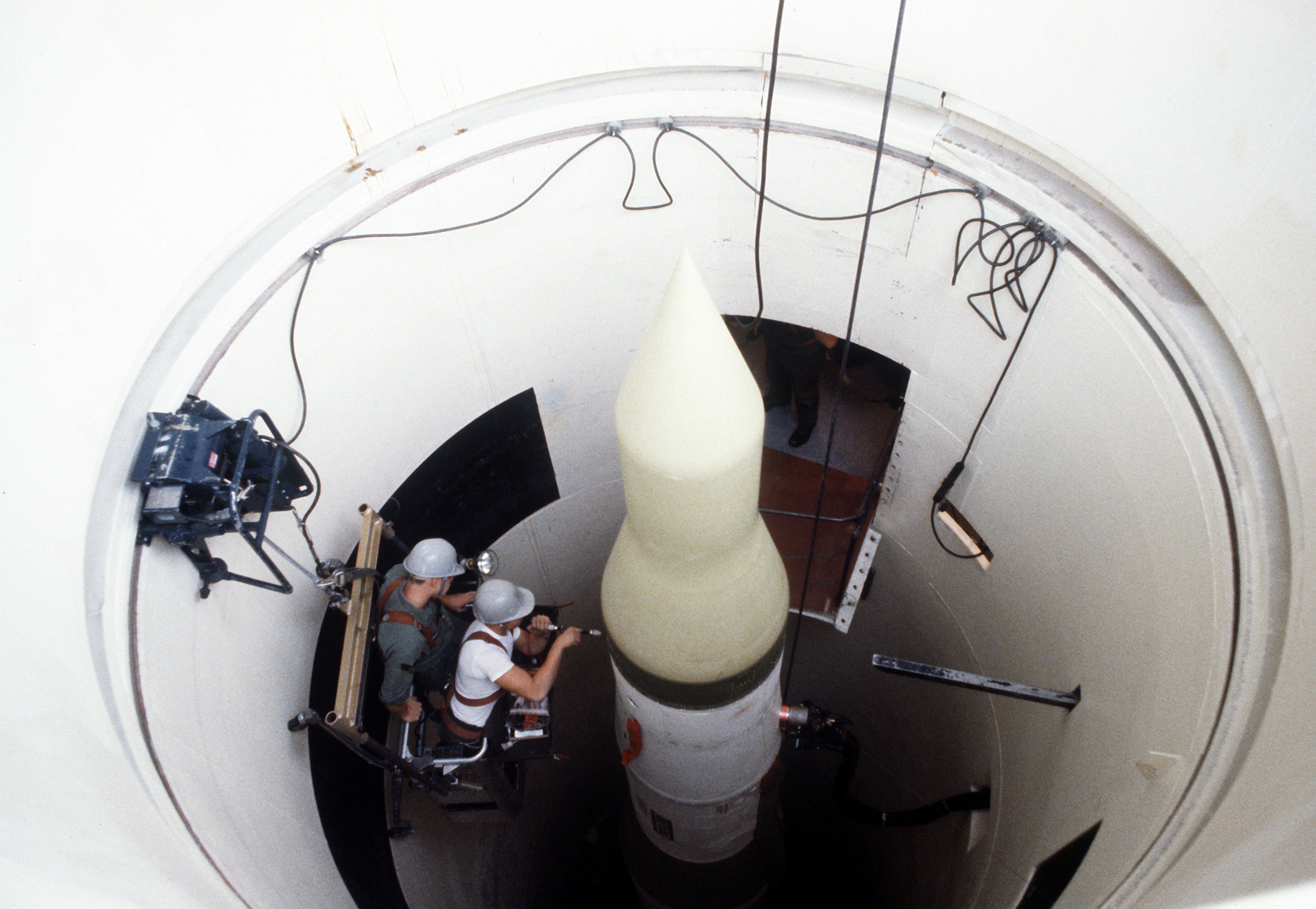New & Noteworthy
Meiotic Fail Safes
May 04, 2017

Launching into meiosis too soon is as dangerous (for a cell) as launching a nuclear missile. Luckily both have protocols to make sure each can only happen in the right circumstances. (Hopefully never for the nuclear missile.) Image from Wikimedia Commons.
If the movie WarGames is anything to go on, the US government does not make it easy to launch a nuclear missile. Two soldiers have to do many things simultaneously and in the right order before that missile can take flight.
This makes perfect sense as you do not want to launch a nuclear attack unless you absolutely have to. The continued existence of the human race depends on these fail safes being in place and working. The same goes for a cell that is heading into meiosis.
Meiotic fail safes are in place to ensure the survival of a cell during the dangerous, early part of meiosis, when there are lots of double-strand breaks in the DNA. These all need to be resolved before a cell is allowed to continue through meiosis to create gametes. If the cell moves on while the breaks are still there, gamete production will fail and the cells will die.
While the exact sequence of events needed to launch World War III is known (at least by a few people), the exact details of getting a cell safely through meiosis are a bit murkier. With the help of good old Saccharomyces cerevisiae, we have the broad outlines, but are still investigating the finer points.
A new study by Prugar and coworkers in GENETICS has helped clear up a bit of the murk in yeast. They have uncovered a connection between the meiosis-specific kinase Mek1p and the transcription factor Ndt80p that may explain how a cell “knows” when it is safe enough to emerge from prophase and keep progressing through Meiosis I.
Mek1p is known to be active when there are lots of these double-strand breaks around and to lose activity as these breaks are resolved. Ndt80p, on the other hand, is inactive when there are lots of these breaks and active when they are resolved. So it makes sense that their activities might be related to each other.
In this study, the authors show that once Mek1p activity falls below a certain level, it can no longer keep tamping down Ndt80p activity. Once unleashed, Ndt80p can go on to activate many genes, including the polo-like kinase CDC5 and the cyclin CLB1. This round of gene activation allows the cell to progress through meiosis.
The key to teasing this out was a set of experiments where Prugar and coworkers were able to control the activities of Mek1p and Ndt80p independent of the cell’s DNA state. It is like circumventing the set of protocols to get those missiles launched.
To independently control Ndt80p activity, they used a form of the protein that requires estradiol to be active. And they controlled the activity of Mek1p by using a mutant, mek1-as, that is sensitive to the purine analogue 1-NA-PP1. In the presence of this inhibitor, Mek1p stops working.
They looked at the targets of these two proteins to infer activity. For example, they determined if Ndt80p was active by looking for the presence of CDC5. And to see if Mek1p was active, they looked for phosphorylated Hed1p.
In the first experiment, they showed that in the absence of both estradiol and 1-NA-PP1, Hed1p stayed phosphorylated. Mek1p was constitutively active in the absence of Ndt80p even as double-strand breaks were resolved. (They used phosphorylated Hop1p as an indirect measure of double-strand breaks.)

In the end, as yeast relies on MEK1 to prevent a meiotic disaster, humans, not computers, kept the world safe in the movie WarGames. Image from flickr
When Ndt80p was activated through the addition of estradiol, CDC5 was turned on and Hed1p lost its phosphorylation. This loss of Mek1p activity did not happen as quickly as with 1-NA-PP1.
These results suggest a negative interaction between Mek1p and Ndt80p. When Ndt80p is active, Mek1p is not and when Mek1p is active, Ndt80p is not. The resolution of the DNA breaks as indicated by the loss of phosphorylated Hop1p was not sufficient to shut off Mek1p activity. It took the activation of Ndt80p for this to happen.
Well, Ndt80p did not directly cause Mek1p’s inhibition. A second set of experiments suggested that a target of Ndt80p, CDC5, was responsible.
For this they made Cdc5p activity independent of Ndt80p induction by making it dependent on estradiol, similar to what they did with Ndt80p. Using a strain deleted for NDT80, they found that inducing Cdc5p activity was enough to eliminate Mek1p activity.
I don’t have the space to go into the rest of the experiments in this study, but I urge you to read it if you want to learn about more of the details of the cell’s protocol for know when it is OK to progress through meiosis.
With the help of the awesome power of yeast genetics (#APOYG), Prugar and coworkers have added to our knowledge about the safeguards that are in place to keep a cell from launching into meiosis too soon. Turns out they are even more complicated than the ones that prevent accidental thermonuclear war.
by Barry Starr, Ph.D., Director of Outreach Activities, Stanford Genetics
Categories: Research Spotlight